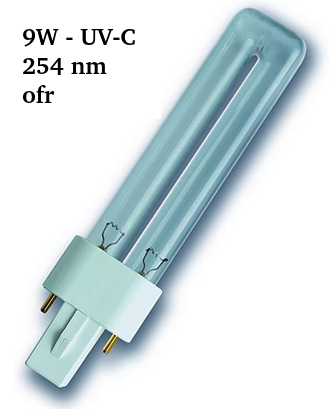
Given the attack we are subjected to due to CoronaVirus (Covid-19), we have decided to sterilize whatever enters in the house, fruit, newspapers, books, etc, using ultra violet UV-C rays.
Caution:
UV-C rays are dangerous for skin and eyes so, close everything in a container that you will put on top of the things to be sterilized.
One of the side effects of UV-C rays is to generate ozone, that is toxic in high concentrations, so ventilated the room where you use the sterilizer.
At the same time ozone, it is also germicidal (also on coronaviruses) and being gaseous it can go even where the light does not reach.
The UV spectrum is divided into three bands:
UV-A (long wave) from 315 to 400 nm
UV-B (medium waves) from 280 to 315 nm
UV-C (short waves) from 200 to 280 nm (for sterilization preferable 220 … 270 nm)
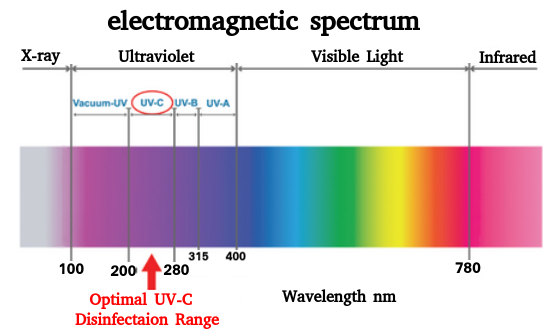
Today (March 2020 in Italy) it is practically impossible to buy a UV-C sterilizer because they are either out of stock or have prices that have at least quadrupled.
For this reason we decided to make one by buying one (but you can use more than one) neon lamp that generates UV-C which fortunately are still found on the Internet, see some links below.
NOTE:
The UV documentation (available on the Internet) shows that wavelengths between 220 and 270 nm are recommended for sterilizing applications (killing viruses and not only).
We bought this lamp and to drive it we recovered the ballast of old failed neon lamps.
The technical note of our lamp is here and tell us that the the voltage is 60V.
For this reason we opened several old neon lamps to find the ballast with the voltage closest to 60V.
Under some old neon low-consumption lamps.
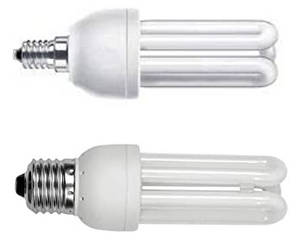
Under some old neon low-consumption lamps opened by cutting the base with a hand saw for iron.
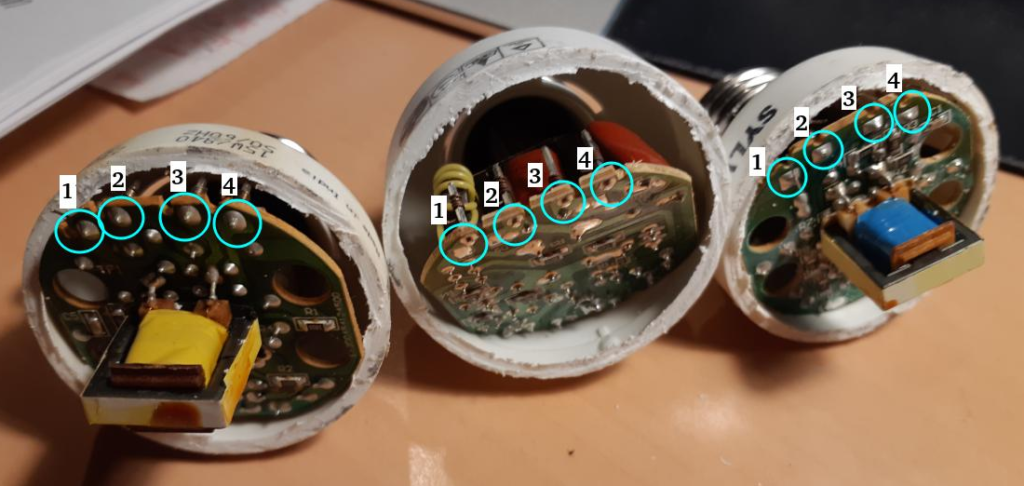
Close up view of a ballast.
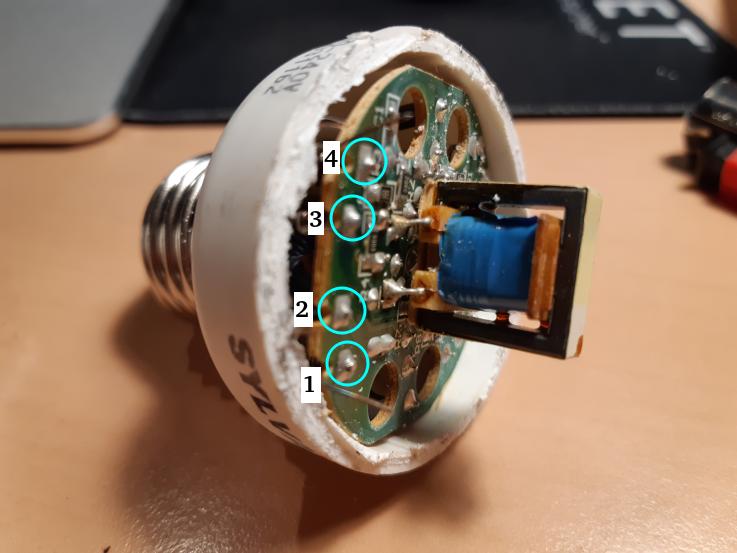
Connection schematic.
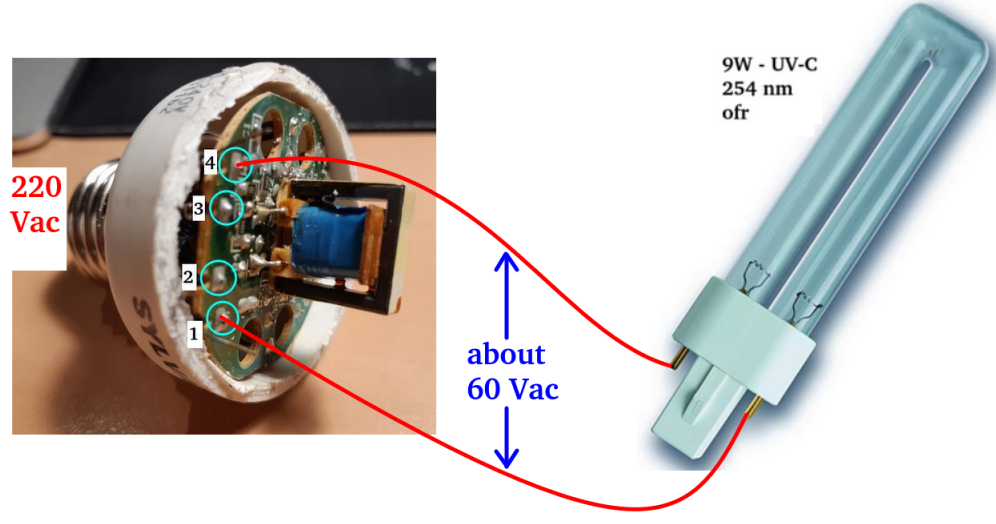

NOTE:
In 90% of the open Ballasts the connections to be used were pins 1 and 4, in 10% the connections to be used were 2 and 3.
If you don’t have old neon low energy consumption lamps to use, look on the Internet (for example this one), there are at very low costs because now we use low consumption led lamps.
Choose 9 … 15W models.
Exposition Time
If you ask yourself how long you have to leave the objects under UV-C rays, for our realization the answer is 20 … 30 min per side at 20 cm of distance.
If you use two lamps you can go down to 10 … 20 min per side.
NOTE:
We suggest to add a timer or a smart plug to automatically switch your sterilizer on and off.
With this sterilizer you can also sterilize the medical masks that would be disposable but since they are very difficult to found, put it under UV-C and you can reuse them safely.
If you have old EPROM cancellers you can use them because they use wavelengths between 220 and 280 nm.
Below there is our realization, enclosed in the cardboard box for removals, with an Osram lamp HNS G23 G13 OFR and two old EPROM cancellers.
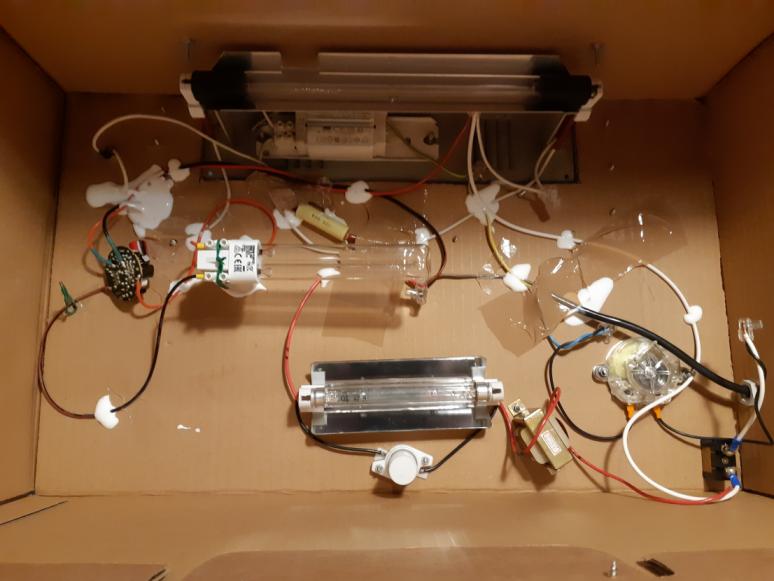
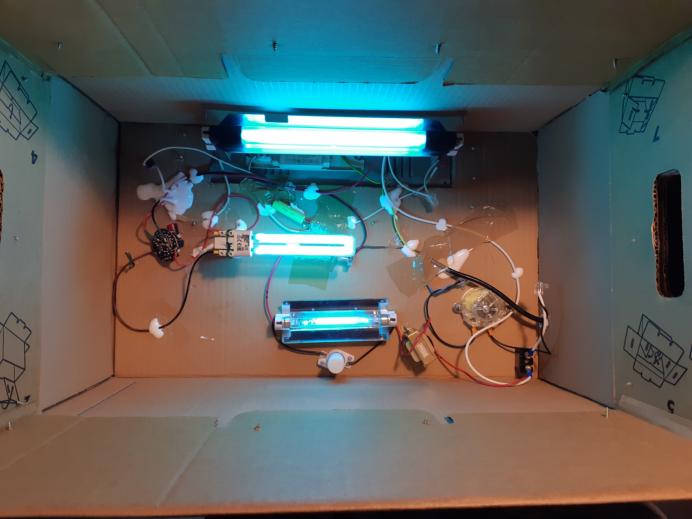
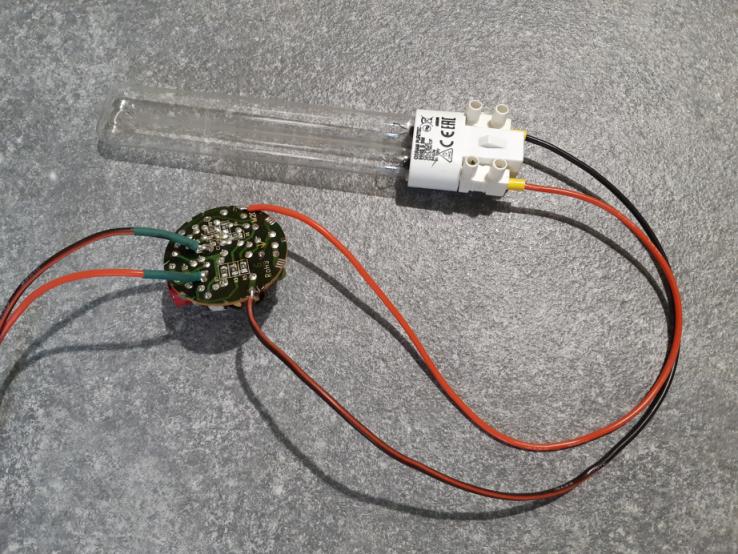

UV-C lamps
- The UV-C neon lamp used in this project is here.
- On Amazon there is a lamp that can be powered directly at 220Vac that emits UV-C and you can find it here.
- On eBay there are low voltage lamps, always UV-C that you can find here.
- For those who do not want to build this kit, I recommend this ready-to-use lamp which still has reasonable costs (April 2020).
NOTE:
- Use FIREFOX or CHROME for a clear view of the images present in this web site
- For enlarge the image press: CTRL +
For reduce the image press: CTRL –
